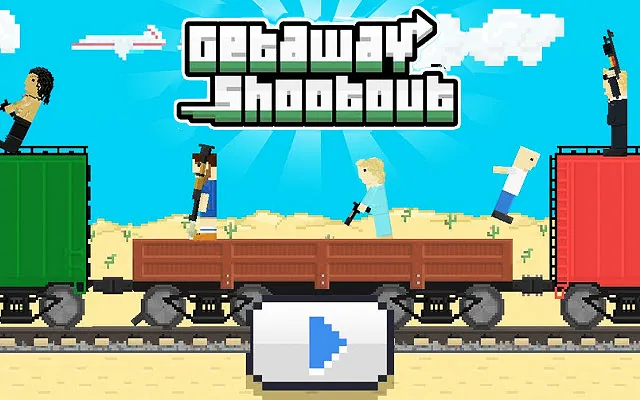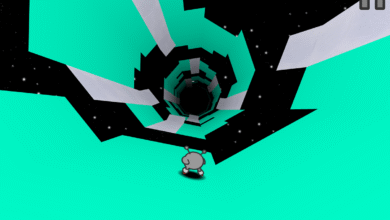Getaway Shootout The Full Rundown From Playground Chaos to GitHub Origins

Getaway shootout github Picture this: you and a friend are on rooftops, moving platforms, maybe dodging obstacles or even guns and your goal is simple: be the first to escape. That’s the wild, jumpy, sometimes ridiculous world of Getaway Shootout. It’s chaotic, it’s fun, and it’s become a favorite among folks who love casual yet competitive games. But there’s more beneath the surface how the code is shared, how getaway shootout github figures into the mix, and why this game resonates so much. Let me walk you through everything.
What getaway shootout github Is
At its core, getaway shootout github is a multiplayer 2-player (or more) action-arcade game. Developed by Neweich Games, you race rivals (computer or human) to an extraction or “escape” point. The catch? You can’t just run there. You jump, you dodge obstacles, you might grab weapons or power-ups, and you try to make it past hazards.
Some key features:
- Platform & Physics-based Gameplay: You’re often on moving platforms, ledges, rooftops etc., so timing your jumps is everything. Sometimes you double-jump, sometimes you trap someone, sometimes you get crushed by falling hazards.
- Weapons & Power-ups: Part of the thrill is grabbing something that shifts the balance gun, boost, weapon, whatever the game offers. If you grab it first, you often get an edge.
- Competitive, Fast-paced Action: Rounds are usually short. Intensity ramps up quickly. You’ll laugh, curse, sometimes get steamrolled but that’s part of the charm.
- Unblocked & Browser-Friendly: Many versions (on Poki, browser sites etc.) can be played in browser without downloads great for quick play, especially for younger players or when you just want something fast.
Why It Hooks Players
From what I’ve seen & experienced, there are a few things that make Getaway Shootout stand out:
- Simplicity + Depth
On paper, the controls are simple: jump left, jump right, grab items. But mastering timing, physics, using weapons, reading the map all that adds layers. It doesn’t take long to pick up, but there’s always something to improve. - Laughs & Chaos
Because the gameplay is a little unpredictable platforms move, weapons spawn in weird spots, hazards appear you often end up in bizarre, funny situations. Those moments are part of what people share on Twitch, YouTube etc. - Replayability
Each round feels fresh. Map layout, timing, how opponents behave, where power-ups land: things change enough that you want to try again. - Multiplayer Tension
Even if playing vs AI, the tension is there. But vs a human? It gets glorious. You try to out-jump them, trap them, make risky jumps just so you can win. There’s satisfaction in winning by inches.
The Gameflow How You Play
Here’s a breakdown of how a typical Getaway Shootout match goes, as well as tips I’ve picked up (from playing & watching others):
| Phase | What Happens | What Helps |
|---|---|---|
| Start / Setup | Few seconds to load map, maybe can choose weapons or see power-ups. Players spawn. | Study map; try to remember where hazards / power-ups pop up. Even small memory helps. |
| Mid-Round | You’re jumping, trying to avoid hazards, racing to the exit. Sometimes players fight over weapon pickups. | Use jumps smartly don’t overshoot. If you see a weapon ahead of opponent, time your movement. |
| Final Stretch | It gets tense maybe few platforms left. Opponent near exit. Every misstep counts. | Stay calm. Avoid risky jumps unless forced. Sometimes better to backtrack than fall and lose time. |
| Victory / Defeat | Someone wins, round ends. Often you want rematch. | Good attitude helps losing can teach more. Watch what you messed up, try again. |
Controls generally are simple: keyboard arrows or key-mappings for left/right jumps, maybe special keys for power-ups.
Technical & Code Side (GitHub, etc.)
So here’s an area many don’t peek into often but I find it fascinating: where the getaway shootout github involvement comes in, what it means, and what people do there.
- There are GitHub repos associated with Getaway Shootout. For example, I found GetawayShootout as a GitHub organization with one public repo called GetawayShootout.github.io.
- The “.github.io” repo hints that some versions or mirrors of the game are being hosted or mirrored via GitHub Pages. That can mean people are maintaining sites where the game runs in browser, maybe stripped-down or community-run copies.
- There are also tutorial series on GitHub / YouTube showing how to build games like Getaway Shootout (player movement, collision, jumping mechanics etc.). Eg the neweichgames/getaway-shootout-tutorial-series repository.
From experience, this leads to a few things:
Cloning / Forking: Devs or hobbyists might clone the project to tinker change physics, add obstacles, tweak weapons. It helps people learn game dev.
Hosting / Mirrors: If the original site is blocked or unstable, GitHub Pages sites provide fallback ways for people to play the game. Might be community driven.
Learning Resource: Because many parts (movement, collision physics, power‐ups) are common game dev problems, this game is useful as a teaching tool.
Common Issues & Criticisms
Just to be real people also gripe sometimes. From what I’ve seen in reviews, forums, watching gameplay:
- Lag / Frame Issues: On less powerful devices or overloaded browsers, physics gets glitchy. Timing suffers.
- Balance Problems: Sometimes power‐ups or weapons spawn unfairly or are too powerful, making the game one-sided.
- Repetition: After many rounds it can feel samey if maps / obstacles don’t vary a lot.
- Control Sensitivity: Jump physics might feel less forgiving; mis‐jumps are frustrating.
Game devs often respond by adding more map variety, smoothing physics, optimizing so it runs well even on lower hardware/browsers.
The getaway shootout github Side What It Means for the Game’s Lifespan
Having parts of the game or mirrors or tutorials on getaway shootout github helps in multiple ways:
- Longevity / Preservation: If original hosting disappears (game site shuts down, dev stops updates), community clones or forks can keep the game alive.
- Modding & Variants: Hobby developers can create variants maybe new maps, adjusted physics, custom themes. That keeps community interest alive.
- Learning & Transparency: For people wanting to build similar games, examining a real example helps. GitHub repos that show how jumping is coded, how collision detection works etc. are gold.
- Open Issues / Feedback: If devs or community use getaway shootout github Issues, people can report bugs, suggest map improvements, ask for balance changes. It’s a direct line.
Conclusion
To sum up, getaway shootout github has a mix of things that hit emotional buttons: challenge, competition, absurdity, quick satisfaction, and the occasional hilarious fail. It tugs at that nostalgic sense of platformers, but injects chaos. The getaway shootout github community side gives it more life it allows fans to engage beyond just playing. If you’re writing content around this, or building something inspired by it, you’ve got room to explore both the fun gameplay and the technical underpinnings. People care about how to win and how it works. They want stories and strategies.



